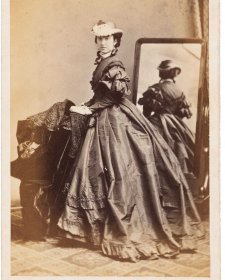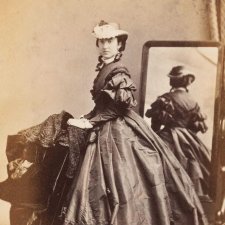Frances Perry (1814–1892), welfare worker, came to Victoria in 1847 when her husband Charles was appointed Anglican Bishop of Melbourne. As one historian has explained, this effectively meant that the diocese got ‘two workers for the price of one’, with Frances Perry not only exemplifying the role of helpmeet and arbiter of morality but contributing substantially to the establishment of essential social services. She worked for the Melbourne Orphan Asylum, the Carlton Refuge and the Melbourne Home for Governesses and Needlewomen, and was founding president of the Melbourne Lying-In Hospital and Infirmary for Diseases of Women and Children. Now the Royal Women’s Hospital, it opened in 1856 to provide care for patients otherwise unable to afford it, the exodus of men to the goldfields having left many women as good as destitute. On occasion, however, the hospital’s management was accused of lacking charity for their ‘moral inquisitions’ into prospective patients, and for ‘excluding … a class of unfortunate women who are oftentimes more to be pitied than condemned.’ Prostitutes, in other words, and single women who had been seduced and abandoned. Despite this, the hospital admitted almost 3000 women in its first decade. During the same period it became the first hospital in Australia to offer nursing training and in 1865 instituted teaching in obstetrics and gynaecology. Frances served as president of the hospital until her departure from Melbourne in April 1874. Frances Perry House opened as a private wing of the Royal Women’s Hospital in 1970 and since 2005 has operated as an independent private hospital.
The firm comprised of the American-born photographers Batchelder & O’Neill became one of Melbourne’s leading studios following its formation in the late 1850s. It had its origins in the business started by Perez Mann Batchelder in 1854. His brothers Benjamin, Nathaniel and Freeman joined him in the business in 1856. Another American, Daniel O’Neill became a partner in 1857, when Perez Batchelder left Victoria. In 1863 they advertised for an ‘experienced operator, for country travelling.’ By 1864 O’Neill was running the Melbourne side of the business outright, Benjamin Batchelder having opened a branch of the firm in Bendigo. O’Neill relocated to Sydney in the late 1860s but by 1871 had returned to Melbourne, working from premises on Swanston Street as a dealer in photographic supplies and equipment. Other photographers continued to trade under the Batchelder name until the mid-1890s though the original proprietors had either died or long since ceased their association with the business.
Purchased 2012



On one level The Companion talks about the most famous and frontline Australians, but on another it tells us about ourselves.



Drawn from the NPG’s burgeoning collection of cartes de visite, Carte-o-mania! celebrates the wit, style and substance of the pocket-sized portraits that were taken and collected like crazy in post-goldrush Australia.



Visit us, learn with us, support us or work with us! Here’s a range of information about planning your visit, our history and more!